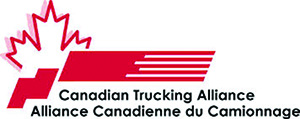Staff Reporter
Canadian Trucking Alliance Unveils 10-Point Plan to Improve Compliance, Safety

In an effort to help trucking groups and government agencies work together on improving safety, the Canadian Trucking Alliance has created a 10-point action plan.
The action plan, released July 10, presents ways in which CTA and provincial trucking associations aim to work with Transport Canada and local government agencies on strengthening compliance with issues such as hours of service and distracted driving.
Headquartered in Toronto, CTA represents 4,500 carriers and maintains provincial outposts in Vancouver, British Columbia; Calgary, Alberta; Regina, Saskatchewan; Winnipeg, Manitoba; Montreal and Moncton, New Brunswick.

“Our board took the position that there were multiple opportunities to improve truck safety strategically,” CTA President Stephen Laskowski told Transport Topics. “The fact of the matter is there are opportunities to raise the bar with truck safety, in particular if we emphasize those small percentages of carriers and drivers that don’t embrace the culture of safety or compliance.”
First among CTA’s points is the intention to introduce regulations mandating that all carriers install electronic logging devices by the end of 2019. Canada published the first draft of its ELD rule in December, about the same time that the United States’ ELD mandate was taking effect. The proposed rule still is in the review process.
Canada’s proposed ELD rule applies only to federally regulated carriers, which are defined as those that operate across provincial boundaries and into the United States. Provincial governments will have to adopt their own laws for the mandate to apply to carriers that operate only within individual provinces.
“From an industry perspective, we would like to see that rule enforced by the end of 2019 or early 2020,” Laskowski said.
The plan also includes goals to work with government agencies and vehicle manufacturers to explore the feasibility of certain technologies, such as forward-facing cameras, in-cab devices that monitor distracted driving behavior and advanced driver assist systems. Additionally, the plan mentions assisting provincial law enforcement officers with on-road safety pre-screening technology to identify errant vehicle operators and training such officers to recognize human factors that contribute to wrecks.
According to the plan, other goals include working with government agencies to develop a better system to identify trucking companies and drivers who pose safety risks as well as creating a “best practices” guide to help those who purchase transportation systems identify unsafe operators.
CTA’s plan also aims to encourage provinces to introduce mandatory entry-level training (MELT) for truck drivers. The alliance plans to work with government agencies and industry representatives to develop a distracted driving awareness module to be incorporated into training programs for commercial vehicle drivers.
The unveiling of CTA’s plan coincides with Alberta government officials announcing an initiative that will explore establishing a MELT program for commercial drivers.
“Safety on Alberta roads is a top priority and a commitment of our government,” Alberta Transportation Minister Brian Mason said in a statement. “We have laid the groundwork for changes that will enhance safety and improve services for Albertans. Now we need to hear from Albertans and stakeholders about the best approach.”
Laskowski acknowledged that the April collision between a semi-trailer and the bus carrying the Humboldt Broncos junior hockey team, which killed 16 and injured 13, was a catalyst for developing this action plan.
A court date for the truck operator involved in the crash is scheduled for late August. The carrier for which the driver worked was suspended shortly after the incident, and Laskowski said the Alberta government’s forthcoming audit of the carrier will be “of great interest to the trucking industry.”
“The actions in our action plan are in some ways a reflection on what may have happened and what we know needs to happen,” Laskowski said. “Just like in the United States, the vast majority of owners and truck drivers are professionals and they know what needs to be done. Unfortunately, there is a small segment of our industries that requires attention.”





